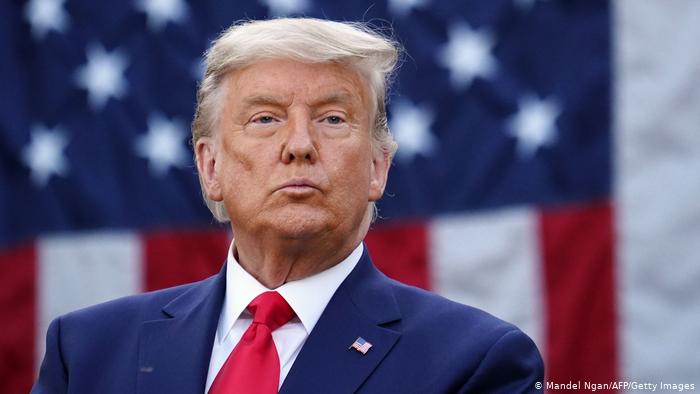Latest world news
Bitcoin, other cryptocurrency holders’ funds in limbo as CEO with password dies in Jaipur
Published
7 years agoon
By

[vc_row][vc_column][vc_column_text]At least C$190 million ($145 million) of investors in Bitcoin and other digital currency holders got lost in cyberspace after the chief executive of cryptocurrency exchange QuadrigaCX, Gerald Cotten, the only person with password and security keys to access the money, died suddenly while in Jaipur, India.
Cotten, 30, died of complications from Crohn’s disease on December 9.
While efforts to crack the code and retrieve the money have not yielded results yet, the Vancouver-based company had moved court seeking protection from creditors after weeks of attempting to “locate and secure our very significant cryptocurrency reserves” following Cotten’s death.
The company, QuadrigaCX, said in court filings that the CEO, Gerald Cotten, was the only person who knew the security keys and passwords needed to access the funds.
AFP reported that a Canadian court on Monday granted bankruptcy protection to the company. Another report said that the Supreme Court of Nova Scotia on Tuesday approved the company’s request for protection against creditors for 30 days and the appointment of accounting firm Ernst & Young to sort out Quadriga’s finances and explore a possible sale.
Cotten’s widow Jennifer Robertson said the company has been unable to access an encrypted computer that Cotten reportedly used to store the cryptocurrencies to 1,15,000 users. “I do not know the password or recovery key,” she said. “Despite repeated and diligent searches, I have not been able to find them written down anywhere.”
She added that an expert “has had some limited success in recovering a few coins and some information on Gerry’s cellphones and other computer, but not yet from the main computer he used to conduct business [with]”.
Robertson’s affidavit stated that Cotten’s laptop, email addresses and messaging system were encrypted to prevent them from being hacked, Bloomberg reported. Cotten was the only person in charge of funds and coins as well as the banking and accounting side of the business.
Cotten filed a will on Nov 27, 2018, 12 days before his death listing substantial assets, according to court documents, said a report on NDTV. He left all his assets to his wife, Jennifer Robertson, and made her the executor to his estate, the documents show.
The exchange, launched in December 2013, allowed users to deposit cash or cryptocurrency through its online trading platform, storing the digital coins on blockchain ledgers that are accessible only by an immutable alphanumeric code. The company had 363,000 registered users, of which 92,000 have account balances owing to them in cash or cryptocurrencies, according to court filings. Cotten was the sole officer and director.
The firm can’t retrieve about C$190 million in Bitcoin, Litecoin, Ether and other digital tokens held for its customers, nor can Vancouver-based Quadriga CX pay the C$70 million in cash those clients are owed.
Cotten was always conscious about security – the laptop, email addresses and messaging system he used to run the 5-year-old business were encrypted. He took sole responsibility for the handling of funds and coins and the banking and accounting side of the business and, to avoid being hacked, moved the “majority” of digital coins into what’s known as cold storage, or unconnected to the internet, the filing said.
The problem is, Robertson said she can’t find his passwords or any business records for the company. Experts brought in to try to hack into Cotten’s other computers and mobile phone met with only “limited success” and attempts to circumvent an encrypted USB key have been foiled, she said in the court filing.
The company’s inability to release its clients’ money has created an uproar among angry — and highly suspicious — investors.
While other crypto exchanges have lost their clients’ money, this appears to be the first one that has said it actually lost the keys to its accounts.
Some Quadriga clients who claim they’re owed money are pursuing their own legal avenues, including software engineer Xitong Zou of Orillia, Ontario. The client claims to be owed about C$560,000 from Quadriga — “one of the largest individual affected users” — according to the affidavit filed in a Halifax court on Feb. 5.
Xitong Zou and others are part of an informal committee of affected users that retained law firm Bennett Jones LLP and McInnes Cooper to represent them during the creditor protection proceedings.
Other customers named in the affidavit include: Tong Zou, with C$560,000 outstanding Epsilon One Pty Ltd., with C$1.04 million and $81,697 outstanding Matthew Leudy, with C$438,677 outstanding Benoit Gagne, with C$371,000 outstanding Block Trading Corp., with C$678,043 Tin Do, with C$525,000 and 523 Ethereum.
Quadriga’s platform went offline Jan. 28, and frustrated investors have taken to Reddit and Twitter to discuss their investigations into the company’s claims and potential lawsuits. Some questioned whether Cotten had indeed died — or whether, perhaps, he had faked his death to pull off what is known as an exit scam.
“The death came at a very odd time in the history of that company,” said Emin Gün Sirer, a professor at Cornell University and co-director of the Initiative for CryptoCurrencies and Contracts, according to a New York Times (NYT) report.
He noted that various online sleuths had been searching the blockchain, a ledger that can be updated by decentralized networks, for evidence of where Quadriga had stored its assets, but had found none, which raised red flags.
When it shut down, Quadriga’s platform had 363,000 users, and 115,000 of them had balances in their accounts: about $180 million in cryptocurrency and $70 million in Canadian currency, the court documents state. The exchange enabled trades of bitcoin, Litecoin and Ether, plus other types of cryptocurrency. The largest user claim was valued at about $70 million.
Quadriga was one of 237 widely recognized public cryptocurrency exchanges worldwide, Sirer told NYT. In terms of daily trade volume, it was ranked in the middle of the pack as of October, according to the website CoinMarketCap.
The exchange kept currency in “hot wallets,” which were connected to the internet and could quickly fulfill withdrawal requests, and “cold wallets,” which were kept offline and stored physically, such as on a USB stick, making them more secure, according to court papers.
Cryptocurrency investors, on social media and in interviews, questioned why a chief executive would be the sole point of access to such a vast sum.
In an initial report to the court, Ernst & Young wrote that it was facing an extraordinary set of case facts. Quadriga had no discernible accounting system and no bank account, according to the filing. Cotten typically sent directions to release payments, which were made through third-party payment processors, to employees by email, and payment inflows and outflows “were not systemically tracked,” Ernst & Young wrote.[/vc_column_text][/vc_column][/vc_row]
You may like
-


Bitcoin at $23.4k; Solana, Ethereum also witness minor dips
-


Meet the Crypto Experts of India
-


Vijay Shekhar Sharma reappointed as Paytm Managing Director and Chief Executive Officer
-


Ethereum NFT now launching Worldwide Blockchain Technology
-


FibitPro Exchange World’s First Discount Broking Platform takes Crypto Industry by Storm
-


Cryptocurrency prices on February 20: Bitcoin, Ethereum, Cardano, Tether | Check the price list here
Latest world news
Trump again threatens forceful takeover of Greenland citing US security concerns
Donald Trump has again suggested the US could use force to take control of Greenland, brushing aside Denmark’s sovereignty and linking the move to Arctic security concerns.
Published
2 days agoon
January 10, 2026
US President Donald Trump has once again raised the possibility of using force to take control of Greenland, dismissing Denmark’s sovereignty over the autonomous Arctic island and framing the issue as a matter of US national security.
Speaking at a White House meeting with oil executives on Friday, Trump said the United States would act on Greenland “whether they like it or not,” reiterating his long-standing interest in acquiring the mineral-rich territory.
“I would like to make a deal, the easy way. But if we don’t do it the easy way, we’re going to do it the hard way,” Trump said when asked about Greenland.
Trump links Greenland control to Arctic security
Trump argued that Washington cannot allow rival powers to gain a foothold in Greenland, citing increased military activity by Russia and China in the Arctic region.
“We’re not going to have Russia or China occupy Greenland. That’s what they’re going to do if we don’t,” he said, adding that the US would act either “the nice way or the more difficult way.”
While Russia and China have stepped up their presence in the Arctic in recent years, neither country has made any territorial claim over Greenland.
Denmark and allies react with concern
Trump’s remarks have sparked strong reactions in Denmark and among European allies. Denmark, which governs Greenland as an autonomous territory, has expressed shock over the repeated threats.
Danish Prime Minister Mette Frederiksen warned that any invasion of Greenland would bring an end to “everything,” referring to NATO and the post-World War II security framework.
The United States already operates a military base in Greenland, underscoring its existing strategic presence in the region.
Trump dismisses Danish sovereignty claims
Despite the backlash, Trump played down Denmark’s concerns and questioned its historical claim over the island.
“I’m a fan of Denmark, too,” he said, adding that the country had been “very nice” to him. However, he remarked that Denmark’s historical presence did not automatically translate into ownership of Greenland.
“The fact that they had a boat land there 500 years ago doesn’t mean that they own the land,” Trump said.
Meanwhile, US Secretary of State Marco Rubio is scheduled to meet Denmark’s foreign minister and representatives from Greenland next week, as diplomatic tensions over the issue continue.
Latest world news
Anti-Khamenei protests intensify across Iran as Reza Pahlavi issues rallying call
Anti-regime protests have intensified across Iran amid soaring inflation and an internet shutdown, with demonstrators chanting against Supreme Leader Ayatollah Khamenei as unrest spreads nationwide.
Published
3 days agoon
January 9, 2026
Anti-government protests against Iran’s Islamic regime have intensified across Tehran and other parts of the country, with demonstrators chanting slogans against Supreme Leader Ayatollah Ali Khamenei amid a deepening economic crisis and widespread restrictions imposed by authorities.
As night fell on Thursday, neighbourhoods across the Iranian capital echoed with chants after exiled Crown Prince Reza Pahlavi called on people to protest at 8 pm local time. Witnesses said crowds gathered despite heavy security presence, with slogans including “Death to the dictator” and “Death to the Islamic Republic” heard in multiple areas.
Internet shutdown and warnings from authorities
Iranian authorities cut off internet access and international telephone calls as the demonstrations gained momentum. The judiciary and security forces warned of a harsh response, even as protesters continued chanting calls for freedom.
Pahlavi accused the government of attempting to silence dissent by shutting down communication networks. He said landlines, internet services and possibly satellite signals had been disrupted to prevent images and voices from reaching the outside world.
The exiled prince urged European leaders to join US President Donald Trump in holding the Iranian regime accountable and called for technical and diplomatic efforts to restore communication access for Iranians.
Support for monarchy slogans resurfaces
Some demonstrators were heard chanting slogans in praise of Iran’s former monarchy, including “This is the last battle, Pahlavi will return.” While such chants were once punishable by death, their re-emergence reflects growing anger over economic hardship and political repression.
It remains unclear whether the slogans indicate direct support for Reza Pahlavi or a broader rejection of the system established after the 1979 Islamic Revolution.
Protests spread nationwide, casualties reported
Demonstrations have continued to spread to cities and rural towns across Iran, with markets and bazaars shutting down in solidarity. At least 42 people have been killed and more than 2,270 detained since the unrest began, according to human rights groups based outside Iran.
Reports have also emerged of security personnel being killed or injured during clashes. Iranian media have reported fatal attacks on police officers and security forces in multiple provinces, including Tehran’s outskirts, Kermanshah, and northeastern regions.
Economic crisis fuels unrest
The current wave of protests, the largest in three years, began in Tehran’s Grand Bazaar after shopkeepers protested the sharp fall of the national currency. Iran’s inflation rate stood at 52 per cent year-on-year in December, according to official data.
The rial has continued to weaken, with one US dollar now costing around 1.4 million rials. Protesters have blamed economic mismanagement, sanctions, and restrictions on social and political freedoms for their worsening living conditions.
President Masoud Pezeshkian has acknowledged the economic pain faced by citizens and described protesters’ demands as legitimate, though he admitted the government’s ability to reverse the currency collapse is limited.
Leaderless movement and uncertain outcome
Despite the scale of the unrest, the protests remain largely leaderless. Analysts note that the absence of a clear alternative leadership has weakened previous protest movements in Iran, with many potential leaders having been arrested, exiled or silenced over the years.
Authorities have yet to launch a full-scale crackdown, though past internet shutdowns have often preceded harsher measures.
Trump issues warning to Tehran
US President Donald Trump warned Iran last week against violently suppressing peaceful protesters, saying the country would “pay hell” if security forces killed demonstrators. He stopped short of confirming any direct engagement with Pahlavi, stating that it was too early to determine who might emerge as a leader of the movement.
As protests continue and communication restrictions remain in place, the situation inside Iran remains tense, with uncertainty over how the regime will respond in the coming days.
Latest world news
US to control Venezuela oil exports indefinitely under Trump plan
The US says it will control and sell Venezuelan oil indefinitely, holding revenues in American accounts as it pushes US energy companies to revive the country’s oil industry.
Published
3 days agoon
January 8, 2026
Washington says proceeds from crude sales will be held in US accounts as American firms are encouraged to rebuild Venezuela’s oil sector
The United States will take control of Venezuela’s oil exports indefinitely and market the crude on global markets, holding the proceeds in US Treasury accounts, Energy Secretary Chris Wright said, outlining Washington’s clearest strategy yet for managing the South American nation’s most valuable resource.
Speaking at a conference in Miami on Wednesday, Wright said the plan would begin with crude currently stored in Venezuela, which has been piling up due to US restrictions and risks forcing production shutdowns.
“We’re going to get that crude moving again and sell it,” Wright said, adding that the US would continue selling Venezuelan oil production going forward.
The move comes as the Trump administration pushes for American energy companies to help rebuild Venezuela’s decaying oil infrastructure and revive output that has suffered after years of underinvestment, corruption and sanctions.
President Donald Trump said earlier this week that Venezuela would relinquish as much as 50 million barrels of oil for the US to sell, worth around $2.8 billion at current prices. The White House confirmed that Washington has already begun marketing Venezuelan crude.
According to officials, revenue from the oil sales will be placed in US Treasury accounts, shielding the funds from Venezuela’s creditors. The money will be used for the benefit of both the American and Venezuelan people.
“We’re not stealing anyone’s oil,” Wright said in a separate interview, stressing that the funds would remain in Venezuela’s name and eventually be brought back for public benefit.
Sanctions eased, compensation put on hold
As part of the strategy, the US is selectively rolling back sanctions on Venezuela’s oil sector. However, Wright said proceeds from early oil sales would not be used to compensate US companies such as Exxon Mobil and ConocoPhillips, whose assets were nationalised under former president Hugo Chávez. Compensation, he said, remains a long-term issue.
Venezuela’s state oil company confirmed it is negotiating with Washington over crude sales under a framework similar to its existing arrangement with Chevron, the only major US oil firm still operating in the country.
Meanwhile, US forces have seized two additional sanctioned oil tankers as the administration tightens control over Venezuelan crude exports. One vessel was intercepted in the Atlantic south of Iceland, while the other was seized in the Caribbean.
US firms urged to revive oil production
The Trump administration is urging companies including Chevron, ConocoPhillips and Exxon to help restore Venezuela’s oil infrastructure after the removal of former president Nicolás Maduro. Officials said discussions have already taken place, and Trump is expected to meet energy executives later this week. Secretary of State Marco Rubio may also attend.
Venezuela’s oil output has fallen to less than one million barrels per day. Wright estimated production could rise by several hundred thousand barrels per day in the short to medium term, though restoring the industry fully would require massive investment over many years.
Global oil prices slipped about 1.5 per cent on Wednesday, trading near $60 a barrel.

Drunk speeding Audi crushes pedestrians in Jaipur, one killed and 15 injured

Nadine de Klerk’s all-round brilliance powers RCB to thrilling win over MI in WPL 2026 opener

Mamata Banerjee says ED raids on I-PAC have politically rejuvenated her





